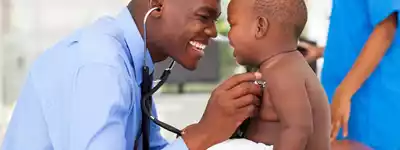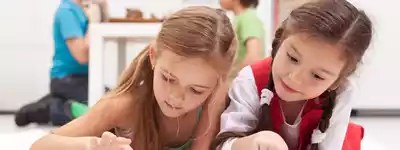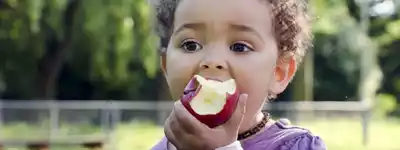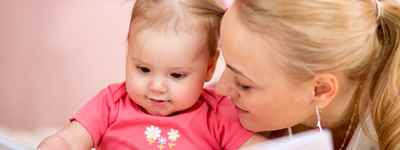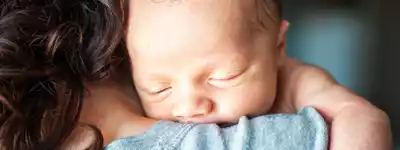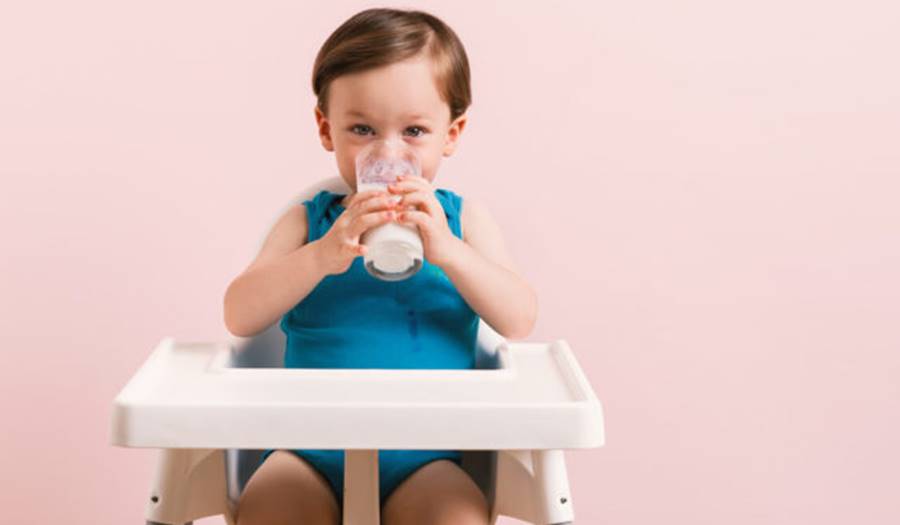
Bottle to Cup Transition
3/8/2021
We previously discussed starting a baby on solid foods and how important the correct introduction is to developing oral motor skills and creating adventurous eaters. But when is the right time to introduce a cup? Is a sippy cup or straw cup a better option? How about an open cup?

TRANSITION TO CUPS
The transition to a cup seems like such a big move for babies just learning to eat but it is essential for learning proper oral motor skills! Babies practice swallowing in the womb and get lots of practice after birth either at the breast or from a bottle. The transition to a cup is just another step on that path and an essential step for proper swallowing.
We recommend starting a cup when you start offering solids. At this point your child is just learning and will most likely only take sips and should not use it for formula or breast milk intake, so water is fine. After age 1, you can use milk in the cup ONLY when they are in the highchair.
Milk should not be served other than during mealtimes. A child who has all day or unlimited access to milk has increased risk of tooth decay, poor weight gain or excessive weight gain, poor appetite and picky eating. They are also more at risk for anemia. Therefore, we only recommend water in their cup during the day.
And we do not recommend juice as a necessary part of a child’s diet. Juice does not offer much nutritionally and contain sugars not necessary in a child’s diet. We would prefer they get nutrients and natural sugars from whole fruits or vegetables. If you must incorporate juice (this excludes medical necessary treatments such as prune juice for constipation), please dilute the juice with water and do not serve over 4 ounces per day.
OPEN CUP
Open cup drinking is an important feeding skill that a child must learn. You can start teaching your baby to use an open cup at around 6 months of age. Open cup drinking is important because it helps teach proper oral motor skills. It helps a baby
• Learn to move liquid to the back of the mouth (with bottle or breast the milk comes out of the nipple at the back of the mouth already)
• Strengthens tongue
• Improves jaw stability
• Strengthens cheeks
• Strengthens lips and helps with lip closure
In addition to oral motor skills, it is also helpful for developing fine motor skills and coordinating hand and mouth movements. It can also be very helpful for a baby that refuses a bottle!
What should you use for an open cup? We obviously don’t want a baby to be given a glass (although often younger babies get their first sips from their parents' water glass, this is for independent drinking)! It is too big, too heavy, and can cause damage to a tooth brought to the mouth too quickly. The best cup is a small cup made for a baby. A soft silicone cup or a soft plastic cup can be a great learning cup. Some babies prefer handles on their cups, and some do better without handles. Give your baby options to see which they prefer. You can even start learning using a clean medicine cup! See the sidebar for examples of open cups for babies.
When you are teaching your baby to use an open cup, be prepared for it to be messy! You can try it during bath time (using clean water, not bath water) or at the end of a feed. And make sure to have a bib handy and even a towel! The easiest way to teach a baby to drink from an open cup is to use a FULL CUP of water. It should only be 1 inch below the rim. This means less tipping of the cup which keeps the cup and baby’s mouth in better alignment. Your baby should also be in properly fitting highchair with the tray below their elbows and their feet supported.
You may start off holding the cup for your baby but as they do well with the cup, you can start placing their hands on the cup. They usually want to be independent feeders and easily take over from there!. You can also decrease the amount of liquid in the cup once they are doing well with the open cup or are using it independently.

STRAW CUP
Open cups are great for when your baby is in the highchair but what about a cup that they can carry around, use in the car, or for that toddler that likes to explore gravity and throws food, utensils, and cups off their tray? First, we agree it is much easier to have a cup that spills less! But remember, while in the highchair our goal is learning skills, NOT having a spill proof cup.
The best option other than an open cup is a straw cup. Children as young as 6 months can learn to drink from a straw cup though they are often not proficient until 8-10 months. Drinking from a straw is another way to improve oral motor skills. It helps work on:
• Lip seal
• Tongue retraction
• Cheek strength
• Correct jaw position
• Suck-swallow-breathe coordination
• Making consecutive swallows
The first straw cup should have a firm small straw made of a soft material like silicone (no metal straws) or plastic. It should be a longer straw to start but you should shorten the straw as they become more adept with straw cups. For correct positioning the straw should not go further than ¼ inch into their mouth. The straw should not push down on the tongue. The straw should only come to the tip of their tongue and the tongue should be behind the straw. A shorter straw helps promote a more mature swallow pattern. It also teaches your child to use their lips and face muscles to drink instead of a biting pattern on the straw. This helps keep facial muscles balanced.
You also want a cup where the flow comes easily, this means using a straw cup without a valve or removing the valve. The valve causes a child to change their jaw and tongue patterns from a mature swallow to an immature or incorrect swallow pattern. For recommendations on sippy cups for infants and toddlers, please see HERE. A weighted cup can also be helpful. In an weighted cup the straw is weighted so that whichever way your child holds the cup, the straw is always in the liquid.
To teach your child to drink from a straw, just start with the straw itself. Hold the straw in water and place your finger over the top of the straw. This will hold the water in the straw. Bring the bottom end of the straw to your baby’s mouth. Once they seal their mouth around the straw, take your finger off the top. This allows the water into their mouth. They very quickly learn from here that sucking will bring water up the straw.
If your child is having a hard time with a straw or coughing when drinking from a straw, first assess their position and the cup. Just like with early feeds, positioning is critical to their success. Make sure their feet are supported by the highchair and the tray is low enough for them to rest their elbows on. They should also be bringing the cup up to them not bending down to drink from the cup. In addition, make sure the straw is not long enough to lay on their tongue. If this doesn’t fix the issue, try thickening the liquid with banana puree to let them practice moving a heavier liquid which is easier to control.
SIPPY CUPS
Parents love sippy cups. But unfortunately, the pediatric health care community, including speech and language pathologists and feeding therapists, do not loves sippy cups. We recommend skipping sippy cups or only using them briefly from 6-10 months until they have mastered a straw cup. If you do use a sippy cup, we recommend removing the valve.
Sippy cups can impact feeding skills by hindering proper oral motor skills. This directly leads to pickier eating! Children who do not develop proper oral motor skills have a harder time chewing and swallowing food. When they have a hard time, they start to refuse those foods.
Sippy cups require the top lip to be over-active to maintain a seal on the sippy cup (this means it’s doing TOO much work). The jaw has to compensate to help support all the pressure from their top lip resulting in an overworked jaw. This actually can change the shape of their face over time! The 360 cup, a favorite of parents, is the worst offender for this due to the shape of the rim.

BOTTLE WEANING
We recommend starting to practice cups with your child and practicing almost every meal or snack after 8 months of age because we highly recommend discontinuing a bottle when your child turns 1, Prolonged bottle use can result in incorrect formation of the palate or other oral structures. It can cause delays in feeding skills as well as speech delays. It prevents a child from developing a mature swallow pattern since bottles require the tongue thrust forward where cups and straws pull the tongue back. It can also contribute to tooth decay by extending the time milk sits on the teeth. Our goal is to have your child 100% off bottles by 14 months.
We realize this can be hard for children and families. Some children can switch easily over to milk in a cup during meals. They can see it as a different beverage, not a replacement, since it is in a new type of cup and served at a different temperature than breast milk or formula. You can offer these children cups at meal time and just drop the bottles cold turkey.
Other children have a harder time with the switch. Some children need to be slowly weaned off bottles, one bottle at a time. Often the bedtime or early morning bottle has some emotional ties to it and can be the hardest the change. Try to ease the transition by building a new routine long before you take the bottle away. At night, try moving the bottle earlier in your bedtime routine and switch it out for a cup of water. Since it isn’t tied to falling asleep, the switch may be easier. Distraction can also be helpful. If it’s early morning, serve a favorite breakfast food right away and offer the cup then. Or start to play with a new fun toy if they are getting upset.
The first year of life moves fast and your baby changes and develops in so many ways. These changes are vitally important to oral motor skills impacting feeding and speech. Starting with an open cup or a straw cup will help your baby develop proper chewing and swallowing skills as well as develop the correct facial muscles. If your child is having difficulty drinking liquids or you have questions or concerns, please do not hesitate to talk to your child’s primary care provider.
Children’s Health Care of Newburyport, Massachusetts and Haverhill, Massachusetts is a pediatric healthcare practice providing care for families across the North Shore, Merrimack Valley, southern New Hampshire, and the Seacoast regions. The Children’s Health Care team includes pediatricians and pediatric nurse practitioners who provide comprehensive pediatric health care for children, including newborns, toddlers, school aged children, adolescents, and young adults. Our child-centered and family-focused approach covers preventative and urgent care, immunizations, and specialist referrals. Our services include an on-site pediatric nutritionist, special needs care coordinator, and social workers. We also have walk-in appointments available at all of our locations for acute sick visits. Please visit chcmass.com where you will find information about our pediatric doctors, nurse practitioners, as well as our hours and services.
Disclaimer: this health information is for educational purposes only. You, the reader, assume full responsibility for how you choose to use it.


